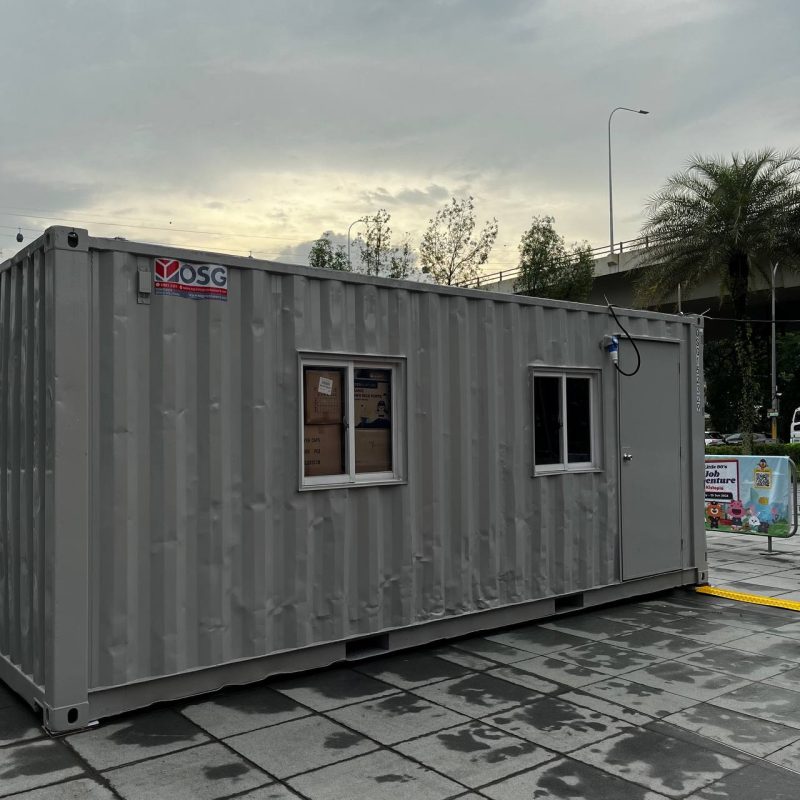The Ultimate Guide to Shipping Container Conversions: Homes, Offices, and More

In recent years, shipping container conversions have emerged as a revolutionary approach to building sustainable, functional, and cost-effective structures. From homes to offices and even unique recreational spaces, shipping containers offer a versatile foundation for a variety of uses. This guide delves into the essentials of shipping container conversions, exploring their benefits, design possibilities, and practical considerations.
Why Shipping Containers?
Shipping containers, originally designed for transporting goods across the globe, have found a new lease on life as building materials. Their robust steel construction makes them durable and resilient, able to withstand harsh environmental conditions. Additionally, they are modular and stackable, which makes them a flexible option for various design configurations.
Benefits of Shipping Container Conversions
- Cost-Effectiveness: One of the main appeals of shipping container conversions is their cost efficiency. Compared to traditional construction methods, shipping containers can be more affordable, especially when considering the reduced need for foundational work and quick construction timelines.
- Sustainability: Using shipping containers for construction supports sustainable practices. By repurposing these containers, you reduce waste and minimize the environmental impact associated with traditional building materials.
- Durability: Shipping containers are designed to withstand extreme conditions, making them an excellent choice for both temporary and permanent structures. Their steel frames are resistant to pests, weathering, and fire, offering long-lasting performance.
- Flexibility and Customization: Containers can be combined, stacked, and modified to create custom layouts and designs. Whether you’re aiming for a compact tiny home or a multi-story office building, containers can be adapted to meet your needs.
Types of Shipping Container Conversions
- Homes: Transforming a shipping container into a home can be both a creative and practical solution. The compact nature of containers encourages efficient use of space, and with proper insulation and ventilation, they can be turned into comfortable living spaces. Interior designs can vary from minimalist to luxurious, with options for adding amenities like kitchens, bathrooms, and even rooftop gardens.
- Offices: Shipping containers have become a popular choice for office spaces due to their modularity and ease of installation. They can be customized to include workstations, meeting rooms, and break areas, providing a unique and modern office environment. Many businesses use container offices as temporary solutions for construction sites or expanding operations.
- Retail Spaces: The trend of pop-up shops and temporary retail locations has led to the use of shipping containers for commercial spaces. These can be transformed into stylish and functional stores, kiosks, or cafes. Their mobility allows businesses to set up shop in high-traffic areas or at events, reaching customers in diverse locations.
- Recreational Spaces: Beyond homes and offices, shipping containers can be converted into recreational spaces such as gyms, art studios, and community centers. Their adaptability makes them suitable for various creative uses, providing functional and engaging environments for different activities.
Design and Construction Considerations
- Insulation and Ventilation: Proper insulation is crucial for maintaining comfort inside a shipping container, especially in extreme climates. Insulating materials such as spray foam, rigid foam boards, or fiberglass can help regulate temperature and prevent condensation. Ventilation is equally important to ensure a fresh and healthy indoor environment.
- Permits and Regulations: Before embarking on a shipping container conversion project, it’s essential to check local building codes and zoning regulations. Requirements may vary depending on your location and the intended use of the container. Securing the necessary permits and approvals will help ensure your project meets safety standards and legal requirements.
- Foundation and Stability: Although shipping containers are strong, they still require a stable foundation to ensure long-term stability. Options include concrete piers, slabs, or even elevated platforms. Proper foundation work will help prevent issues related to shifting, settling, or water damage.
- Utilities and Infrastructure: Installing utilities such as plumbing, electricity, and HVAC systems in a shipping container requires careful planning. Customizing these systems to fit within the container’s compact space can be challenging but is essential for functionality and comfort.
Final Thoughts
Shipping container conversions offer a dynamic and innovative approach to building structures that are both functional and environmentally friendly. With their cost-effectiveness, durability, and flexibility, they provide a viable alternative to traditional construction methods. Whether you’re looking to create a unique home, an efficient office, or a creative retail space, shipping containers can be adapted to meet your vision and needs.
As you explore the possibilities of shipping container conversions, keep in mind the importance of thoughtful design and adherence to regulations. With careful planning and execution, you can transform these unassuming metal boxes into extraordinary spaces that enhance your lifestyle and contribute to a sustainable future.

